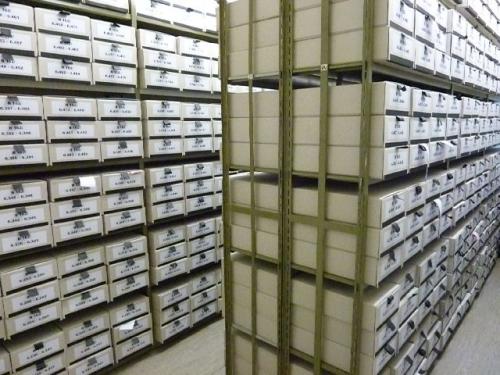The Archive as Digital User

EHRI has conducted an international web survey to better understand how professional users such as archivists, librarians, curators, and information specialists use our services. These professionals are key users and stakeholders of EHRI, given their significant role in providing content for EHRI and their knowledge of Holocaust related materials available at their institutions. Therefore, it is important to understand how they use the services EHRI provides and how the digital world of research is affecting their work practices.
Practical barriers
It is important for institutions to connect to their users via digital methods, and the survey results show that the larger the institution, the more digital services they have developed, and this is often because they have more money and trained staff available. In general, the area in which most investment has been undertaken is in digital finding aids and catalogues to help users search collections. The overall consensus is that institutions want to make collections available online, but it is only possible to do this once a number of practical barriers is overcome.
Digitized
Some of the problems identified by the surveyed institutions included technical, legal, and financial barriers, on top of a lack of skilled staff. Some institutions felt they could not contribute material to an online portal or aggregator, such as EHRI, because their material had not yet been digitized. EHRI will, therefore, make more of an effort to communicate with institutions to make clear that the EHRI portal is interested in catalogue information regardless of whether or not records have been digitized.
Training
Benefits and opportunities of being involved with an online portal or aggregator, such as EHRI, were identified as an increased visibility of collections, and an increased findability and use of collections. The survey results also showed that for an institution to be part of a bigger network is also highly beneficial, and that institutions would like to be more involved with portals such as EHRI, but need help to overcome technical, financial, and skill barriers. One way in which EHRI could assist institutions with the skill barrier, is to offer more training opportunities in this area for archival staff.
Steep learning curve
One comment from the EHRI survey results that in general sums up the views of many institutions on involvement with online portals and aggregators was: ‘It pushes us to expand the visibility of our collections and to advance in producing finding aids. Also, it teaches us how to deal with different types of users and questions. We went through a steep learning curve while trying to present collections to EHRI and via our own portal website.’
Reliable portal
The EHRI portal was identified as one of the most used and well-known portals with whom institutions share their Holocaust collection information. This shows that the EHRI portal is recognized as a reliable portal with which to share institution and collection information. The survey also showed that the EHRI portal is used by all types of institutions, bringing together a wide variety of information to be used for Holocaust related research.
Recognition
A benefit of involvement in EHRI has been recognition by higher authorities and institutions, demonstrated by comments such as ‘Our archives are better received and the archive thus more firmly anchored in the Scientific Society’, ‘This makes our collection known’, and ‘Extension of the circle of users, image gain, recognition also by superior authorities’. EHRI looks forward to developing solutions to the challenges identified by institutions who participated in our survey and to expanding the EHRI portal in future.
Read the full report Archivists and Collection Holding Institutions as Users
Annelies van Nispen and Rachel Pistol
Image: ©Bundesarchiv, Germany
